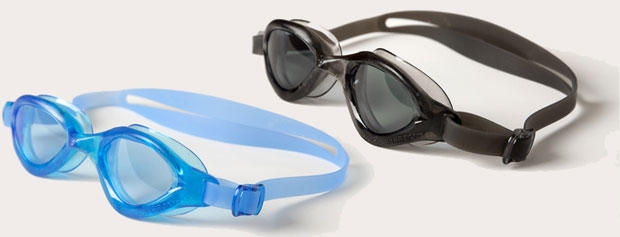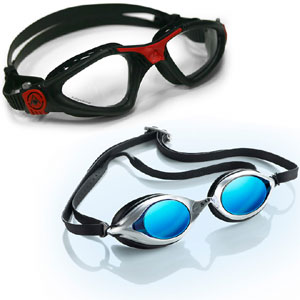HUUB Aphotic
Photochromatic? Or photochromic? I prefer the shorter version. Why are they called commentators? They comment. Why not commenters? Why the extra "at" in preventative? Why not just preventive? It prevents, right? It doesn't preventate. Less is more. Hence photochromic.
I wrote previously about Zoggs' Predator with photochromic lenses, and these kinds of goggles are all I swim in nowadays. Photochromic lenses are usually clear or gently smoked (or brown or gray or yellow or some other tint) under neutral circumstances, but darken when exposed to light, most commonly ultraviolet radiation.
Eyeglass wearers are most familiar with Transitions. There are other photochromic lenses, made by Carl Zeiss, Vision-Ease, Rodenstock, Corning, Signet Armorlite. The quality of a photochromic lens is judged by how quickly the molecules on the lens activate, turning the lens darker or lighter based on the ultraviolet input; and in how dark they get; and in how long the photochromic qualities last.
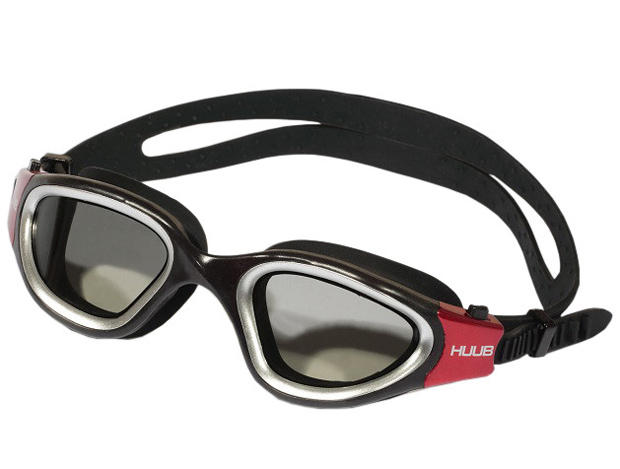
There are three goggles in the market now that I know of that are photochromic: the Zoggs Predator Flex Reactor; the HUUB Aphotic (pictured above), and a photochromic version of the TYR Special Ops 2.0. I have not tried the TYR. I have no idea what the lens quality is like. It is what seems to me an unreasonably inexpensive goggle for a photochromic. The photochromic lens in the TYR Ops 2.0 seems to cost only $3 to $6 more than the polarized lens in that same goggle. This makes no sense, and gives me pause when considering the lens quality, but since I have not tried this goggle I cannot report on it.
I have extensive experience with the two other goggles, and I can talk about them.
Both the Aphotic and the Predator are very gently smoked. I have used the Predator in indoor pools and these goggles are fine. I've also used both these goggles on bright, sunny days outdoor and they're also both fine. I'm happy with the photochromic quality of each goggle's lens.
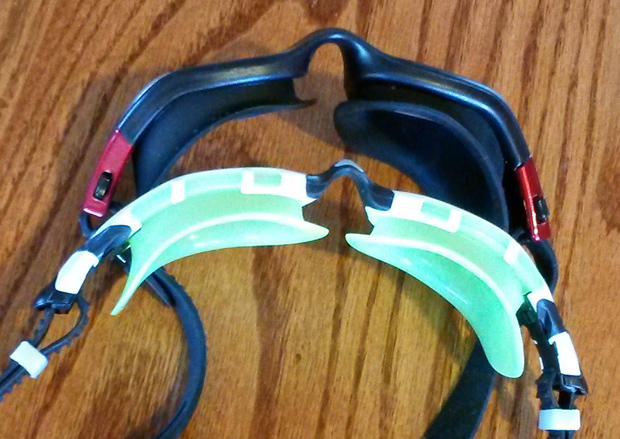
The Aphotic's lens is much more curved than the Predator. You can't really tell until you look at this goggle compared to the Predator at various angles. This makes the Aphotic both a goggle with a wider field of vision than the Predator, and it makes the goggle a bit more "distortive," if that's the word. I have never found a curved goggle lens that does not have some sort of distortion – even from companies like Aqua Sphere that have curved lenses down to a science.
Indeed, the Aphotic is the goggle you'll want if what interests you is a photochromic lens in the larger, wider-vision, semi-mask motif that has made Aqua Sphere so popular. Until Aqua Sphere gets around to putting a photocrhomic lens into the Kayenne, the Aphotic is as close as you are going to come.
The Aphotic is just a bigger goggle than the Predator. It's further away from your face. A bigger "footprint" on your face (is that a faceprint?). I notice this when I push off the wall. For this reason, and especially for pool swimming, I prefer the Predator. It's just a little bit more minimal although wearers of Swedes would scoff at the idea that either of these goggles is minimal.
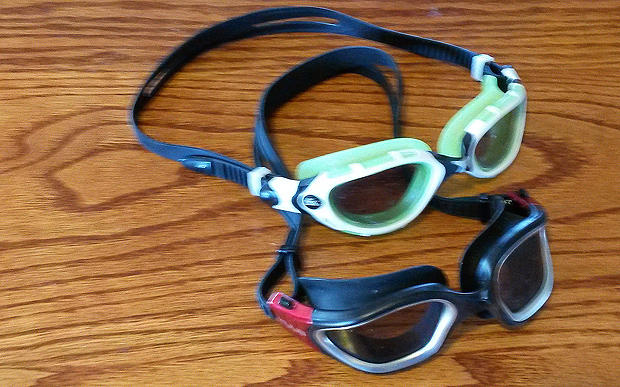
The Aphotic is a $70 goggle and, like the similarly priced Predator is probably an Italian-made lens assembled into the goggle in China (where most of your athletic equipment for all three of triathlon's constituent sports is made). I know the Predator's lens is Italian-made, and I suspect the Aphotic's is as well, since HUUB compares this to a "Fototec" style lens (Tifosi's photochromic sunglass lens).
Why are photochromic goggles a big deal? To me, it's because you never need to wonder or worry what goggle you need. Once I bought a goggle, went to the pool, commenced the workout, and stopped mid-lap to tell the lifeguard the digital pool clock had quit. He looked at me, I looked at him, I eventually raised my goggles to find the clock working perfectly. Polarized goggles will sometimes do that.
Photochromics are not that much more expensive than standard goggles when you realize all the goggles they replace. It's nice going to a race knowing you aren't going to choose the wrong lens. It's nice having a goggle that gives you maximum visiblity on a gray morning, but that adjusts once you round the buoy and you're staring into the morning sun with every breath.
The Aphotic is the second photochromic-lens goggle, joining the Zoggs Predator Flex Reactor of which I have personal experience and can endorse for use.


